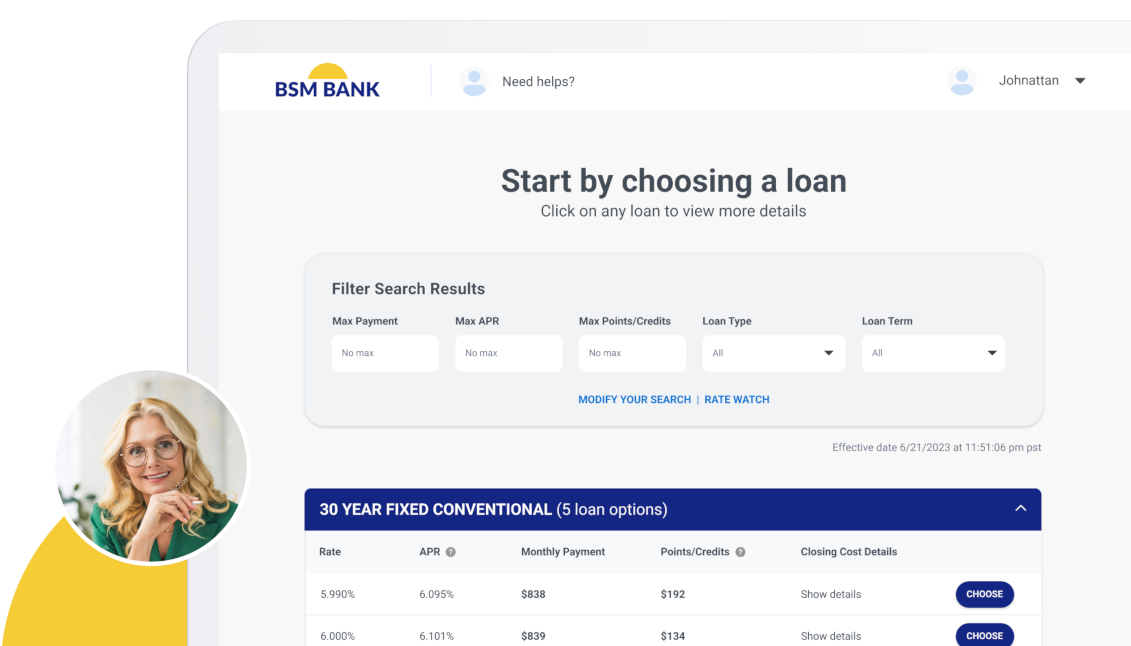In our digital times, we can do almost anything with the click of a button. But in most cases, people are still needed to make sure everything runs smoothly. The mortgage industry is no different.
Underwriting is a complicated process, and lenders can potentially lose money if it is not done correctly. For instance, the housing market crash in the late 2000s was partially attributed to bad underwriting. This pushed regulators to implement a variety of reforms to improve underwriting practices.
These reforms required lenders to spend more time and money on trained personnel to ensure regulatory compliance. However, a few short years after the reforms were enacted, fully automated mortgage companies entered the market. These companies leverage data and technology to replace underwriters and have since taken up a significant portion of the market.
Companies like Rocket Mortgage have become popular because of the speed and convenience they offer, whereas traditional lenders have been slow to adopt automated solutions. However, there are many benefits traditional lenders have to offer, and digital solutions can help lenders capitalize on those benefits while delivering the speed and convenience consumers have come to expect.
What Do Mortgage Underwriters Do?
Underwriters are financial experts who help banks and credit unions assess how much risk they will take on by giving out a loan. They perform risk assessments by analyzing a potential borrower’s credit history, assets, the size of the loan and payback capacity. They’ll also verify the applicant’s income and employment details, and debt-to-income ratio.
This is also known as the five C’s of credit — character, capacity, capital, collateral and conditions — which is a system used by lenders to determine the creditworthiness of each applicant.
Once an underwriter has approved all loan documents and verified conditions, the underwriter will give the loan a “clear to close” status.
Mortgage Automation in Underwriting
An automated underwriting system (AUS) is a solution that uses artificial intelligence (AI) to evaluate a customer’s risk and provides a computer-generated loan decision. The lender’s AUS compares the borrower’s information — credit score, debt, income, assets and more — against the lender’s guidelines and requirements for the loan the borrower is applying for.
Using automated underwriting, financial institutions can:
- Extract and process data quickly and efficiently
- Instantly verify information
- Flag inconsistencies and reduce the potential for fraud
- Compare borrower information against employer databases
AUS has substantially accelerated the underwriting process, allowing lenders to process more loans in a shorter amount of time while reducing operating costs. There are obvious advantages to using automated underwriting, but human underwriters may still need to step in at various points throughout the underwriting process.
AUS only uses defined rules to make its lending decisions. However, not all borrowers fit perfectly within these rules. Underwriters are able to step in and address any issues before a final decision is made.
Fannie Mae and Freddie Mac understand the importance of automated underwriting systems. That is why they are also working to improve their process so they can approve or deny loans based on their requirements. For example, Freddie Mac’s loan product advisor system allows lenders to submit their loan early in the process so they can proactively manage risk. The benefits of the system are:
- It saves time and money
- Accelerates the underwriting process
- Simplifies documentation by keeping relevant information visible to necessary parties
Why the Mortgage Industry Needs Underwriters
1. Machines Can’t Always Accurately Process Complex Loans
Automated underwriting software can cause a loan to be consistently rejected because of strict lending standards. While this saves time by automatically rejecting borrowers that may not qualify for the loan, there are non-traditional borrowing situations that may need extensive review.
Manual underwriting requires more paperwork from the borrower, such as tax returns, bank statements, proof of income, assets, debt and liabilities. While this takes more time, the borrower can add details that may help to get the loan they need. Here are a few instances where manual underwriting may be necessary:
- Unconventional income: Self-employed borrowers or borrowers with additional income from gig work typically have income that goes up and down. These types of borrowers may need to provide proof of income stability that is better suited for manual underwriting.
- Unfavorable credit history: AUS will reject applications with credit scores that don’t meet the lender’s minimum credit requirements. Borrowers in this situation may need the help of a manual underwriting to accurately determine creditworthiness.
- Little or no credit history: Manual underwriting can use other factors if a borrower has a thin credit history. This requires proof that the borrower pays their bills on time by looking at payments not related to debt, like rent or utility bills.

2. Manual Underwriting Allows Lenders to Look at the Bigger Picture
Not all borrowers are the same. Everyone has their own unique circumstances that may set them apart from the average borrower — but this doesn’t necessarily mean they can’t qualify for a mortgage.
If the borrower lacks certain eligibility requirements, what compensating factors do they that will allow them to fall within certain risk parameters?
Subscribe to BeSmartee 's Digital Mortgage Blog to receive:
- Mortgage Industry Insights
- Security & Compliance Updates
- Q&A's Featuring Mortgage & Technology Experts
Manual underwriting allows the lender to look at the bigger picture and determine whether a borrower has the ability to repay their mortgage. Underwriters can look at the borrower’s overall risk if their circumstances don’t quite match lending criteria, but are otherwise qualified.
3. Lenders Can Provide Better Service
Although mortgage automation creates a seamless and efficient process for both the borrower and the lender, it’s not always the best choice. Employees at every level can make or break the customer experience, and underwriters are still needed to provide personalized attention to certain loan submissions.
If a borrower has a unique situation, then the lender can bypass AUS and have an underwriter work on the loan file. Without this option, the borrower could lose out on their dream home or be forced to look elsewhere for a lender willing to accommodate.

Combining Automated Processes and People
Lending companies can use automated underwriting systems to reduce loan processing times and potentially cut interest rates, according to Insider Intelligence’s Online Mortgage Lending Report.
Here are some key benefits of mortgage automation in underwriting:
1. Increased efficiency in data extraction and verification: Automated underwriting systems can quickly extract data and verify borrower information to save valuable time.
2. Smarter fraud detection: Automation can flag inconsistencies and cut down the risk of fraud.
3. Better decision-making capabilities: Humans are better at handling unpredictability, but machines are superior at making decisions with technical and repetitive tasks with little effort.
4. Consistency: Underwriters are human, meaning they have their own interpretations of lending policies that may vary from employee to employee. Automated underwriting systems consistently follow defined workflows.
5. Improved compliance: Regulatory compliance changes can sometimes take time to learn, but any updates to rules or regulations get implemented immediately with automated systems.

Underwriters Remain a Necessary Part of the Mortgage Industry
Underwriters are not condition-clearing workers. They’re a valuable asset to lending and are even more powerful when paired with automated underwriting technology.
Combined with AUS, underwriters can spend more time on complex loans to avoid having a qualified borrower rejected for a loan or an unqualified borrower approved by mistake. Borrowers who don’t need additional review can go through AUS and move quickly through the underwriting process.
AI has taken the lead in the financial industry, but underwriters are still needed to ensure the data entered into the system is correct, that all the required documentation has been collected and reviewed and that the borrower is eligible for the mortgage.
Contact BeSmartee to learn more about how our mortgage technology can help your lending business.




